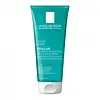What's inside
What's inside
 Key Ingredients
Key Ingredients

 Benefits
Benefits

 Concerns
Concerns

 Ingredients Side-by-side
Ingredients Side-by-side

Water
Skin ConditioningSodium Laureth Sulfate
CleansingDecyl Glucoside
CleansingGlycerin
HumectantSodium Chloride
MaskingCoco-Betaine
CleansingSalicylic Acid
MaskingPEG-150 Pentaerythrityl Tetrastearate
EmulsifyingPEG-6 Caprylic/Capric Glycerides
EmulsifyingZinc Gluconate
Skin ConditioningSodium Hydroxide
BufferingCapryloyl Salicylic Acid
ExfoliatingTetrasodium EDTA
Citric Acid
BufferingMenthol
MaskingPolyquaternium-47
Skin ConditioningHexylene Glycol
EmulsifyingSodium Benzoate
MaskingWater, Sodium Laureth Sulfate, Decyl Glucoside, Glycerin, Sodium Chloride, Coco-Betaine, Salicylic Acid, PEG-150 Pentaerythrityl Tetrastearate, PEG-6 Caprylic/Capric Glycerides, Zinc Gluconate, Sodium Hydroxide, Capryloyl Salicylic Acid, Tetrasodium EDTA, Citric Acid, Menthol, Polyquaternium-47, Hexylene Glycol, Sodium Benzoate
Water
Skin ConditioningPropylene Glycol
HumectantDecyl Glucoside
CleansingCocamidopropyl Betaine
CleansingTea-Lauryl Sulfate
CleansingPropanediol
SolventSodium Laureth Sulfate
CleansingDisodium Laureth Sulfosuccinate
CleansingCocamide DEA
EmulsifyingAloe Barbadensis Sprout
HumectantAlgae Extract
EmollientPropolis Extract
Skin ConditioningHamamelis Virginiana Leaf Extract
Skin ConditioningOryza Sativa Bran Extract
Skin ConditioningBoswellia Serrata Extract
Skin ConditioningMel Extract
MoisturisingOligopeptide-10
AntimicrobialPEG-150 Pentaerythrityl Tetrastearate
EmulsifyingGluconolactone
Skin ConditioningDisodium EDTA
Piroctone Olamine
PreservativeSodium Benzoate
MaskingButylene Glycol
HumectantCalcium Gluconate
HumectantCitric Acid
BufferingPotassium Sorbate
PreservativeParfum
MaskingPhenoxyethanol
PreservativeWater, Propylene Glycol, Decyl Glucoside, Cocamidopropyl Betaine, Tea-Lauryl Sulfate, Propanediol, Sodium Laureth Sulfate, Disodium Laureth Sulfosuccinate, Cocamide DEA, Aloe Barbadensis Sprout, Algae Extract, Propolis Extract, Hamamelis Virginiana Leaf Extract, Oryza Sativa Bran Extract, Boswellia Serrata Extract, Mel Extract, Oligopeptide-10, PEG-150 Pentaerythrityl Tetrastearate, Gluconolactone, Disodium EDTA, Piroctone Olamine, Sodium Benzoate, Butylene Glycol, Calcium Gluconate, Citric Acid, Potassium Sorbate, Parfum, Phenoxyethanol
 Reviews
Reviews

Ingredients Explained
These ingredients are found in both products.
Ingredients higher up in an ingredient list are typically present in a larger amount.
Citric Acid is an alpha hydroxy acid (AHA) naturally found in citrus fruits like oranges, lemons, and limes.
Like other AHAs, citric acid can exfoliate skin by breaking down the bonds that hold dead skin cells together. This helps reveal smoother and brighter skin underneath.
However, this exfoliating effect only happens at high concentrations (20%) which can be hard to find in cosmetic products.
Due to this, citric acid is usually included in small amounts as a pH adjuster. This helps keep products slightly more acidic and compatible with skin's natural pH.
In skincare formulas, citric acid can:
While it can provide some skin benefits, research shows lactic acid and glycolic acid are generally more effective and less irritating exfoliants.
Most citric acid used in skincare today is made by fermenting sugars (usually from molasses). This synthetic version is identical to the natural citrus form but easier to stabilize and use in formulations.
Read more about some other popular AHA's here:
Learn more about Citric AcidDecyl Glucoside is a glucose-based surfactant and emulsion stabilizer. It is created by reacting glucose with the fatty acids from plants.
Surfactants help clean the skin by trapping oil, sebum, and dirt to be washed away. As an emulsion stabilizer, it stabilizes the ingredients in a product by preventing them from separating.
This ingredient is biodegradable and non-toxic. This ingredient is commonly found in baby shampoos.
Decyl Glucoside is sometimes used to stabilize the UV filter Tinosorb.
Learn more about Decyl GlucosidePEG-150 Pentaerythrityl Tetrastearate isn't fungal acne safe.
Sodium Benzoate is a preservative. It's used in both cosmetic and food products to inhibit the growth of mold and bacteria. It is typically produced synthetically.
Both the US FDA and EU Health Committee have approved the use of sodium benzoate. In the US, levels of 0.1% (of the total product) are allowed.
Sodium benzoate works as a preservative by inhibiting the growth of bacteria inside of cells. It prevents the cell from fermenting a type of sugar using an enzyme called phosphofructokinase.
It is the salt of benzoic acid. Foods containing sodium benzoate include soda, salad dressings, condiments, fruit juices, wines, and snack foods.
Studies for using ascorbic acid and sodium benzoate in cosmetics are lacking, especially in skincare routines with multiple steps.
We always recommend speaking with a professional, such as a dermatologist, if you have any concerns.
Learn more about Sodium BenzoateSodium Laureth Sulfate (SLES) is a foaming, cleansing, and emulsifying ingredient. It is created from palm kernel oil or coconut oil. SLES is not the same as sodium lauryl sulfate. It is much milder and less likely to irritate.
SLES helps create foam in personal products. It also prevents ingredients from separating, helping to elongate the shelf life.
Sodium Laureth Sulfate is a type of sulfate. It can be drying. We recommend speaking with a professional about using this ingredient if you have concerns.
Learn more about Sodium Laureth SulfateWater. It's the most common cosmetic ingredient of all. You'll usually see it at the top of ingredient lists, meaning that it makes up the largest part of the product.
So why is it so popular? Water most often acts as a solvent - this means that it helps dissolve other ingredients into the formulation.
You'll also recognize water as that liquid we all need to stay alive. If you see this, drink a glass of water. Stay hydrated!
Learn more about Water